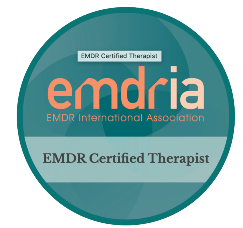Healing PTSD: How to feel empowered
Seeking help following a trauma, or even when seeking methods for healing PTSD months or years following the trauma, typically invokes significant feelings of vulnerability. Experienced trauma therapists are aware of the fragile nature of their work. Trauma clients often struggle to figure out how to navigate through seeking treatment for healing PTSD and finding a therapist that can help them in a time efficient manner, but in a way that feels safe to them. If you find yourself or one of your loved ones in this situation, there are some specific things to consider.
• Although you may want an immediate fix to the feelings you are experiencing, it is important to find a therapist with whom you feel comfortable. Talk to a few therapists and see if you feel a connection when on the phone, or schedule a consultation with them prior to committing to the therapy. Most therapists offer an initial consultation either live or over the phone, prior to booking and proceeding with counseling.
• There is a fine line between establishing trust and familiarity in the therapeutic relationship, cultivating good coping strategies, and diving in to the actual trauma work. It is not helpful to begin the trauma work too soon, as it can exacerbate vulnerable feelings and make matters worse. Appropriate three phase models for working with PTSD all involve stabilization as the first phase of treatment. During this phase, counseling focuses on providing a safe environment, improving coping skills and resources, and building trust in the therapeutic relationship. It is not until the second phase of treatment that the deeper trauma work begins. The final phase of trauma treatment is in helping the client to re-acclimate in their relationships and adjust to their sense of self- that part of themselves that does not change in spite of trauma, or other experiences outside of their control.
• Be cognizant that you should not be launching into the second phase of treatment too soon, even if you are eager to start that work. You want to be stable, before moving into appropriate trauma work, such as EMDR therapy, in the second phase of treatment. Address goals regularly with your therapist to ensure you are moving toward, and accomplishing, them. Re-evaluate the progress you are making after every few sessions and discuss with your therapist if you feel progress is stalled.
• Follow the advice of your therapist in implementing any homework that is assigned between sessions, and work on your coping skills. Although this is not directly working on the trauma, it lays the foundation for the trauma work and will expedite the progress in therapy.
• Most importantly, communicate with your therapist. Talk with your therapist about how you are feeling about not only the trauma and other life issues, but also about the counseling. The experience of the therapeutic relationship is significant. Working through glitches, miscommunications and other experiences, both positive and negative, also creates progress and can foster feelings of healthy empowerment and accomplishment as issues are addressed and worked through together.
Click here for more information on Trauma Treatment.
A good book that I often recommend for people starting the journey healing PTSD is Getting Past Your Past. (2013) Shapiro, F.





